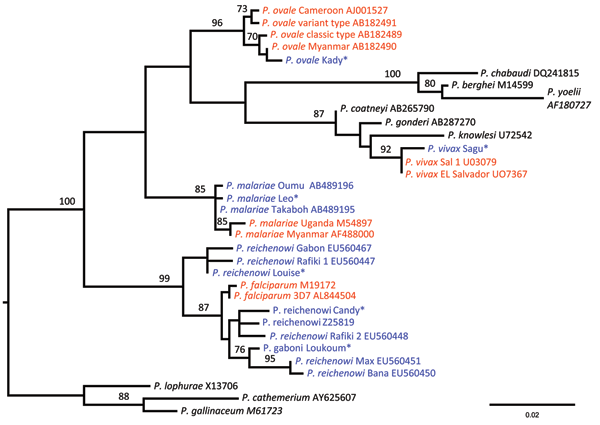Volume 16, Number 12—December 2010
Dispatch
Wild Chimpanzees Infected with 5 Plasmodium Species
Figure 2

Figure 2. Maximum likelihood tree of Plasmodium spp. obtained from the analysis of a 621 bp–long 18S alignment. Blue indicates sequences determined from chimpanzee hosts; green, bonobos; gray, gorillas; and red, humans. Black indicates sequences obtained from nonprimate hosts. Plasmodium spp. sequences derived from chimpanzees in this study are marked with an asterisk. Bootstrap values are shown when >70. The tree was rooted using avian plasmodium sequences. Accession numbers of all sequences used are shown in the Table. Scale bar indicates nucleotide substitutions per site.
Page created: August 28, 2011
Page updated: August 28, 2011
Page reviewed: August 28, 2011
The conclusions, findings, and opinions expressed by authors contributing to this journal do not necessarily reflect the official position of the U.S. Department of Health and Human Services, the Public Health Service, the Centers for Disease Control and Prevention, or the authors' affiliated institutions. Use of trade names is for identification only and does not imply endorsement by any of the groups named above.